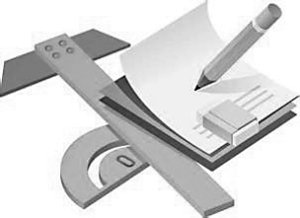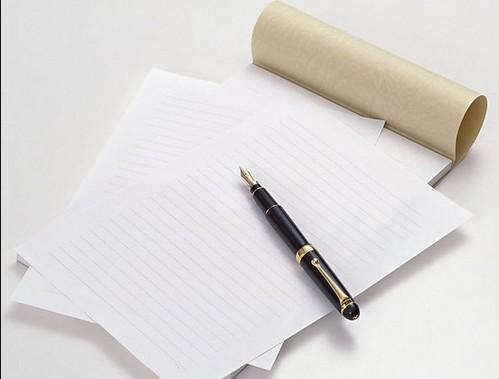初一英语册知识点范文第1篇2.一百年以后in100years3.免费的befree4.通过电脑学习studyoncomputers5.活到80岁livetobe80yearsold6.在整个世界int下面是小编为大家整理的初一英语册知识点【五篇】(完整文档),供大家参考。

初一英语册知识点范文第1篇
2.一百年以后in 100 years
3.免费的 be free
4.通过电脑学习study on computers
5.活到80岁live to be 80 years old
6.在整个世界 in the whole world
7.更少的污染less polution
8.更少的计算机fewer computers
9.在中学be in middle school
10.在上班be at work
11.不/同意 disagree/agree with
12.上大学go to college
13.五年前five years ago
14.空闲时间 free time
15.拉小提琴 play the violin
16.太空站 space statio
17.电脑程序设计师 computer programmer
18.住在公寓里live in an apartment
19.爱上fall in lovewith
20.去滑冰go skating
21.下次next time
22.在周末on weekends/at weekend/on the weekend
23.养宠物keep a pet/pets
24.赢得比赛win the game/match
25.看起来整洁look smart
26.实现come true
27.工作面试job interview
28.穿着校服wear uniforms
29.科幻电影science fiction movies
30.数百hundreds of
31.帮忙做某事help do sth./help with sth.
32.看起来像look like
33.醒来wake up
34.再三的again and again
35.感到厌烦feel bored
初一英语册知识点范文第2篇
短语句型:总结了初中英语教学,初中英语单词,初中英语作文,初中英语辅导中务必掌握的英语考点。
1,问姓名的方式:What’syourname?MayIhaveyourname
回答姓名的方式Myname’sJenny./I’mJenny./Jenny.
姓:lastname/familyname
名字:firstname/givenname。
2,问电话的方式What’syourtelephone/phonenumber?
It’s555-3539.
3,回答这个问题answerthequestion
4,这个问题的答案theanswertothequestion这把锁的钥匙thekeytothelock
5,family集合名词(这个词是郑州中考英语的重点词汇之一,要重点把握,决胜河南中招英语)
初一英语册知识点范文第3篇
Unit 1 Can you play the guitar ?1、can+动词原形,它不随主语和数而变化。(1)含有can的肯定句:主语+can+谓语动词的原形+其他。(2)变一般疑问句时,把can提前:Can+主语+动词原形+其他?肯定回答:Yes,主语+can。否定回答:No,主语+can"t.(3)含有can的否定句:主语+can"t+动词的原形+其他。(4)含有can的特殊疑问句:特殊疑问词+can+主语+动词原形+其他?2、may+动词的原形。(may为情态动词)一般疑问句是把may提前,肯定回答是:Yes,主语 +may。否定回答是:No,主语+mustn"t。或please don"t。join+某个组织,俱乐部,party,参军,党派等 “加入”Join sb. “参加到某人中” join in (doing)sth “加入做......,参加某个活动” Join in=take part in +活动,比赛3、说某种语言:speak+语言 4、play+球、棋、牌;
play+the+乐器。5、擅长于(做)什么:be good at +名词/动ing6、帮助某人做某事:help sb. (to ) do sth. help sb. with sth.7、我能知道你名字吗?May I know your name?8、想要做什么:want to do sth 例如:I want to learn about art.9、What club do you want to join?I want to join the chess club and the basketball club.10、What club does Tom want to join? He wants to join the swimming club .11、He can’t play the violin or the piano. Can you help kids with swimming?12、Why do you want to join the English club? Because I want to learn English well.Unit 2 What time do you go to school ?1、what time和when引导的特殊疑问句。(1)对时间提问用what time,也可以用when。询问钟点时用what time,询问日期、月份、年份时用when。(2)询问做某事的时间时,两者可以互换。
(3)其他询问时间的句子:What"s the time? =What time is it?现在几点了?时刻表达法:顺读法和逆读法。(1)顺读法:“钟点+分钟”直接读数字。(2)逆读法:借助介词past或to表示,要先说分再说钟点。A.当分钟不超过30分钟时(包括30分钟),即30,用to表示。其结构为:“所差分钟(即60—所过分钟数)+to+下一个整点”,to译成“差”,差几分钟到几点。C.当分钟为30分钟用half表示,当分钟为15分钟用a quarter。2、always 总是>usually 通常>often常常>sometime 有时3、Watch+TV、球赛 “观看,观赏”,特指长时间注视。See+电影、医生 “看见”,强调看的结果。Look “看”,强调看的动作,look后接宾语时要用介词at。Read+书刊、杂志 “阅读”4、listen to +宾语 6、Take a shower “淋浴” 7、Eat breakfast 吃早餐5、Go to +地点名词 如:go to school go+地点副词 如:go homeUnit 3 How do you get to school?一、本单元知识点总结1.get to school 到校 2.take the subway 乘地铁3.take the train 坐火车 4.leave for 到……地方去,离开去某地5.take…to…把……带到…… 6. most students 大多数学生7. from…to…从……到…… 8.think of 想到,想起9.ride bikes 骑自行车 10.in other parts of the world 在世界的其他地方11. how far 多远 (路程、距离) 12.how long多长(时间)13.take the train to school 乘火车去上学 14.in places 在一些地方15.go to school by boat乘船去上学 16.on the school bus乘坐校车17.be different from和……不同 18.one 11-year old boy 一个十一岁大的男孩二、重点知识详解1.take +a/an/the+表示交通工具的名词,乘……去某地,是动词短语,在句中作谓语。He takes the train. take the subway乘地铁 take a walk散步 take a shower洗个澡take a rest休息一会 take a seat 坐下 take some medicine 吃药2.by+表示交通工具的单数名词或on/in+ a/an/the/one’s+表示交通工具的单数名词,是介词短语作方式状语。I get to school by bike. = I get to school on my bike.3.walk/ride/drive/fly+to+地点名词,步行/骑自行车/开车/坐飞机去某地表示乘交通工具方式可以互换表达相同的意义:Take the bus to school=go to school by bus=go to school on a busDrive a car to work=go to work by car=go to work in a carFly to shanghai=go to shanghai by plane/air=take the/a plane to shanghai=go to shanghai on a/an/the plane.4.get表示“到达”,后接名词需加to,接地点副词不加to.reach 给示到达,是及物动词,其后直接接宾语。arrive in+大地点 arrive at +小地点 后接副词不需介词。5. It takes sb some money/time to do sth.花费某人多少时间/钱做某事Sb pay some money for sth 某人为某物花费多少钱Sb spend some time/money on sth 某人在做某事或某物上花费时间/钱Sb spend some time/ money (in)doing sth Sth cost sb some money 某物花费某人多少钱6. How far is it from A to B?=How far is B from A?答语有两种:W wW.x kB 1.c Om(1) It’s…meters/miles/kilometers(away)有……米/英里/千米(远)(2) It ‘s about ten minutes’ walk/ ride. 大约有十分钟步行/骑车的路程。7have to 后加动词原形,侧重客观的需要,有“不得不,被迫”之意,有多种时态形式,否定式为don’t have to(needn’t)意为“不必”。Must 侧重于说话者的主观看法,认为有必要或有义务做某事,只有现在时一种形式,否定式must’t意为“一定不要,不允许,禁止”反意词为“needn’t”。8.感谢用语:Thank you very much , Thanks a lot , Many thanks.回答感谢用语的句子:That’s ok /all right. 不用谢。You are welcome 不客气。
It is my pleasure./My pleasure./It is a pleasure.不客气、那是我的荣幸。/Don’t mention it。别在意。
It was nothing at all.那没什么。三、语法归纳(一)how 引导的特殊疑问句1.how 引导的特殊疑问句提问交通方式,其答语分三种情况:a. take a/an/the+交通工具(单数)b. by+交通工具(单数)c. on/in+限定词+交通工具2. how far 用来提问距离,多远,其答语分为两种:(1)用长度单位表示:It is five kilometers.(2)用时间表示:It’s twenty minutes’ walk.3.how long 用来提问时间,意为多久回答常用“for+段时”。----How long have you learnt English?----For 3 years.how soon 用来提问做完某事还需要多长时间, 常用于将来时态时, 常用“in+时间段”来回答。――How soon will you arrive in Beijing?----In 3 hours.Unit 4 Don’t eat in class肯定的祈使句:(1) 实义动词原形+其他;
(2) be动词原形+形容词+其他;
(3) Let sb do sth.否定的祈使句:(1) Don’t+实义动词+原形;
(2) Don’t be+形容词+其他;
(3) Don’t let sb do sth (4) No+Ving.练:(1) My mother said to me, “Tom, _______ in bed.”A. not read B. doesn’t read C. don’t read D. didn’t read(2) Don’t __________ (fight). = No __________ (fight).2. 不要迟到:Don’t arrive late. = Don’t be late. (arrive = be)上课/上学不要迟到:Don’t arrive (be) late for class/school.3. 主语省略(无主语):Don’t arrive late for class.主语不省略(有主语):We can’t arrive ;ate for class.4. 在学校我们必须穿校服:We have to wear uniforms at school.句型:不得不/必须做某事:have to do sth否定:不必做某事:don’t have to do sth穿校服:单数:wear a uniform 复数:wear uniforms练:(1) – I can’t stop smoking, doctor. – For your health, I’m afraid you ______.A. can B. may C. must D. have to5. 在我家里有太多的规矩:I have too many rules in my house.词组:太多…:too many…6. 我从来没有任何快乐:I never have any fun.(never译为“从来没有”,表示否定,否定句中表示“任何,一些”,用any)7. 不要大声说话:Don’t talk loudly.请大声说:Speak loudly, please.8. 他擅长于唱歌:He is good at singing.句型:擅长于做某事:be good at doing sth9. 表示“地点”的词组:(1) 在教室里:in the classroom 在课堂上:in class(2) 在走廊上:in the hallways 在学校里:at school = in school10. 表示“时间”的词组:(1) 下课后:after class 放学后:after school(2) 在上学的白天/晚上:on school days/nights 比较:at night(3) 到晚上10点钟之前:by 10 o’clock p.m.11. (1) with 和;
如:He lives in Beijing with my parents. (不能用and)(2) with 戴着;
如:Do you know the fat man with a hat? (不能用wears)(3) with 有着;
如:It’s an old house with a beautiful garden. (不能用has)Unit5 Why do you like pandas?1. –让我们先去看考拉。-- Let’s see the koalas first. (first翻译为“首先”)–你为什么最喜欢考拉?-- Why do you like koalas best? (best翻译为“最”)--因为它们很可爱。-- Because they are very cute.句型:让某人做某事:let sb do sth2. –你为什么不喜欢老虎?-- Why don’t you like tigers?--因为它们有点吓人。-- Because they are kind of scary.① 在此处,表示“不”,只要在do后加not即可。② 有点…:kind of+形容词 = a little+形容词3. 你还喜欢别的什么动物? What other animals do you like? (后有animals, other不加s)你喜欢和别的年轻人工作吗? Do you like to work with other young people?This isn’t my sweater. It’s __________ (you).Are all these children __________ (you)?4. 他是一个8岁的男孩:He is an 8-year-old boy. (后有名词boy, 用连字符,year用原形)他8岁:He is 8 years old. (后无名词boy, 不用连字符,岁数大于1,year变复数)5. 请保持安静:Please be quiet. = Please keep quiet. (keep译为“保持”,= be)6. 他每天通常睡和放松20个小时:He usually sleeps and relaxes 20 hours every day.每天:every day (要分开) 连在一起的everyday翻译为“日常的”,是个形容词。7. 和某人玩:play with sb (倒翻)8. 在白天:during the day = in the day 在此处,during = in9. 在晚上:at night = in the evening 在上学的晚上/白天:on school nights/days10. 吃草:eat grass 吃叶子:eat leaves (leaf的复数形式) 吃肉:eat meat11. 相似单词比较:(1) 草:grass (不可数,无复数) (2) 玻璃:glass 复数:glasses 眼镜12. 汉语:因为…,所以… 英语:because…, so… (不能同时出现在一个句子中)汉语:虽然…,但是… 英语:though…, but… (只能使用其中一个)如:_______ Tom is tired, _______ he wants to have a food rest.A. Because, so B. Though, but C. /, so D. /, but13. (1) first num. 第一;
如:Sunday is the first day of a week.(2) first adv. 首先;
首先:at first 如:Let’s see the koalas first.14. (1) best adv. 最;
如:Why do you like koalas best?(2) best adj. 的;
如:Who do you think is the best teacher in your class?15. (1) very adv. 非常(放在形容词前);
如:The koalas are very cute.(2) very much 非常(放在动词后);
如:Thank you very much.16. (1) kind(s) of n. 种类;
如:There are many kinds of anmals in the zoo.What kind of noodles would you like?(2) kind of = a little adv. 有点;
(无形式变化) 如:He is kind of lazy.(3) kind adj. 和蔼的,友善的;
如:It’s kind of you to help me with my English.17. 树叶:leaf 复数:leaves 变化规则:去f加ves;18. 小偷:thief 复数:thieves 变化规则:去f加ves.Unit6 I’m watching TV1. 现在进行时的结构:主语+be+Ving. (be动词和动词+ing两者缺一不可)考题形式:(1) 已知be动词,考后面的动词形式(要加ing);
(2) 已知后面的动词+ing, 则前面用be动词。如:(1) The boy is _________ (run) with his father.(2) Some children are __________ (lie) on the grass.(3) My brother and I are __________ (play) soccer.(4) His sister is __________ (read) a book.2. --你正在做什么?-- What are you doing? --我正在看电视。-- I’m watching TV.3. 那听起来很棒:That sounds great/good.4. 谢谢你的信和照片:Thanks for your letter and the photos.① 谢谢某东西:Thanks for sth ② 句型:谢谢做某事:Thanks for doing sth5. 这是我的一些照片:Here are some of my photos. (“一些照片”是“复数”,be用are)这是我的一张全家福照片:Here is a photo of my family. (“一张照片”是“单数”,be用is)6. 句型:忙于做某事:be busy doing sth如:His brother is busy _________ (write) stories in his room.7. 表示“活动”的“动词词组”① 做家庭作业:do one’s homework ② 打扫房间:clean the room③ 吃晚饭:eat dinner ④ 打电话:talk on the phone = make a telephone call⑤ 看书/看报/看杂志:read books, read newspapers, read magazines⑥ (学生)上课:have an English class (老师)上课:give an English class⑦ 举行晚会:have an evening party ⑧ 和某人说再见:say goodbye to sb8. 在购物中心:at the mall 在游泳池:at the (swimming) pool在学校:at school 在体育馆里:in the gym9. 在第一张照片中:in the first photo 在第二张照片中:in the second photo在下一张照片中:in the next photo 在最后一张照片中:in the last photo10. 等汽车:wait for the bus 在汽车站等(某人):wait (for sb) at the bus stop11. 我的兄弟和我:my brother and I (要把“我”放在后面)12. (身体)好,健康:well = fine 如:-- How is your mother? -- She is _______.13. 活动:activity 复数:activities (以辅音字母+y结尾的,去y加ies)玩具:toy 复数:toys (以元音字母+y结尾的,直接加s)14. (1) 也:also 用于“肯定句的句中”;
(2) 也:too 用于“肯定句的句末,前加逗号”;
(3) 也:either 用于“否定句的句末,前加逗号”。15. (1) show n. 节目;
如:TV show, sports show, game show, talk show(2) show v. 给…看;
如:Can you show me your family photo?I’ll show you the way.(3) show v. 表演;
如:Can you show us Beijing Opear?一般现在时 The Simple Present Tense一般现在时表示现在的状态 ;
表示经常性或习惯性的动作;
表示主语具备的性格和能力等。例如:1、He is twelve. 他十二岁。2、I go to school at seven every day.3、They speak Japanese. 一般现在时常和表示时间频度的副词连用。如:often, usually, sometimes, always, never, hardly ever等。1. I often read books in the evening.2. Do they usually go to school by bike?3. He doesn’t like milk. He never drinks it.4. Sometimes my mother gets back at five.一般现在时常和以下时间表达法连用。如:in the morning, in the afternoon, in the evening, at noon, at night, every day, on Sunday(s), at seven 等。Do they have math in the morning?She sleeps nine hours every night.It takes me two hours to do my homework every day.They don’t have classes on Sundays.它有三种形式:一、谓语是be的一般现在时。1、肯定形式是:主语+be+表语(形容词、名词充当表语)。2、否定形式是:主语+be+not+表语(形容词、名词充当表语)。3、一般疑问句是:Be+主语+表语(形容词、名词充当表语)?肯定回答是:Yes,主语+be. 否定回答是:No, 主语+ be+not.4、特殊疑问句是:特殊疑问词+Be开头的一般疑问句?注意:be要随着主语变。二、谓语是情态动词can/may.....+动词原形的一般现在时。1、肯定形式是:主语+情态动词can/may.....+动词原形+宾语。2、否定形式是:主语+情态动词can/may.....+not+动词原形+宾语。3、一般疑问句是:情态动词can/may.....++动词原形+主语+宾语。肯定回答是:Yes,主语+情态动词. 否定回答是:No, 主语+ 情态动词+not.4、特殊疑问句是:特殊疑问词+情态动词can/may.....开头的一般疑问句?注意:情态动词can/may.....+动词原形。三、谓语动词是实义动词及物动词或不及物动词的一般现在时。1、肯定形式是:“主语+及物动词+宾语”或“主语+不及物动词”。2、否定形式是:“主语+don"t/doesn"t+及物动词+宾语”或“主语+don"t/doesn"t+不及物动词”。3、一般疑问句是:“Do/Does+主语+及物动词原形+宾语”或“Do/Does+主语+不及物动词原形”。肯定回答是:Yes,主语+do/does. 否定回答是:No, 主语+ don"t/doesn"t.4、特殊疑问句是:特殊疑问词+do/does开头的一般疑问句?注意:根据主语确定用do还是does。 动词第三人称单数的构成:(用于第三人称单数、可数名词的单数和不可数名词的一般现在时中)1、直接加--slook—looks read—reads play—plays stop—stops2. 在字母s, x,ch,sh,o后加--esmiss—missesfix—fixes watch—watches wash—washesgo—goes do--does3. 辅音字母加y结尾的动词变y为i,再加-escarry–carries study–studies hurry–hurries cry–cries4.特殊的 have -- has现在进行时(1)构成形式:Be动词+动词的ing形式这里强调一点,两者缺少其中任何一种都不可以构成现在进行时。(2)现在进行时表示动作正在进行或事情正在发生。(3)有用的依据:一个句子中既有be动词,又有动词,且动词加了ing 该句是现在进行时(4)句中往往有now、look、listen等词。动词现在分词的变化见下表:词尾情况 变化方式 例词一般情况 加—ing play玩—playing do做—doinggo去—going jump跳—jumpingsing唱—singing ski滑雪—skiingsee看见--seeing以不发音的e结尾 去e加—ing make做—making take拿到—takinglike喜欢—liking come来—comingwrite写—writing dance跳舞—dancinghave有—having close关—closing以重读闭音节结尾的动词,中间只有一个元音字母,词尾只有一个辅音字母 双写最后一个辅音字母再加—ing swim游泳—swimming sit坐—sittingrun跑—running get得到—gettingput放—putting begin开始—beginningjog慢跑—jogging同音词:
too---two----to buy---by I---eye four----for there----theirright----write sun----son no----know here---hear who’s----whose近义词:
many----a lot of / lots of large----big desk----tablephoto---picture lamp----light like----love反义词或对应词:old----new go----come big----smallopen----close black----white here----there完整形式:let’s=let us(让我们) I’d=I would can’t=can not I’m=I am词性变换:one(序数词) first monkey(复数)monkeys skiing(原形)skiis(复数)are families(单数)family make(现在分词)makingwe are(缩略形式)we’re do(第三人称单数)does have(第三人称单数)hasphoto(复数)photos good(反义词)bad做题目时一定要记住:can+动词原形like+动词inglike+名词复数play+足球类 play the +乐器类how many +名词复数would like +to+动词原形let’s+动词原形现在进行时:be(am,is,are)+动词ing动词第三人称单数形式
初一英语册知识点范文第4篇
1、如有always ,often, usually, sometimes, seldom, never, once a....,every...用一般现在时,第一、二人称复数后跟动词原形,第三人称单数后跟动词加"s"/"es"。2、如有now ,look! ,listen, at the moment ....用现在进行时,结构是be (am, is, are) +v-ing3、如有tomorrow, the day after tomorrow, from now on, in +一段时间, some day, next....用一般将来时,结构:will + v原 be going to +v原(没有动词用be )4、如有yesterday, ......ago , last....just now.....用一般过去时动词加edgive sb. Sth.=give sth. to sb. 给某人某物 every day每天,write down 写下,记下write it (them) down everyday每天的,日常的,how about doing sth.=what about doing sth.做....怎么样 each other 互相.thanks a lot= thank you very much非常谢谢回答That"s all right. =You"re welcome.= That"OK.= It"s my pleasure.=Not at all.Why don"t you+V原...=why not+...V原 为什么不help sb. with sth. 在某方面帮助别人 help sb. (to )do sth.帮助某人做某事with one"s help=with the help of sb.在某人的帮助help oneself to sth.请自用食物watch sb. do sth. 看到某人做了某事,(现在没有做,做过)watch sb. doing sth.看到某人正在做某事(正在做)see, hear类似remember to do sth.想起记得要做某事,未做事 remember doing sth.相起记得做过某事forget to do sth. 忘记要做某事 forget doing sth.忘记做过某事welcome back欢迎回来 , new term新学期this term这学期 , next term 下学学期,last term上学期, give you some advice给你一些建议why not 为什么不, make a mistake=make mistakes犯错误correct spelling正确的拼写, what else?=what other things? 还有什么a piece of advice 一条建议, follow /take one"s advice采用别人的建议,send sth to sb.=send sb. sth. 寄给某人 send for派人去请/取send up发射. all the time一直enjoy oneself=have a good time=have a great time=have fun, 玩得愉快lots of =a lot of =many(可数)much(不可数)许多 , ,spend : sb. spend some time on sth.某人花费时间做某事sb. spend some time (in) doing sth. 某人花费时间做某事Sb. spend some money on sth. 某人花费钱买某物Sb. spend some money (in) buying sth.某人花费钱买某物Cost: sth. cost sb. some money 某物花去某人钱pay: sb. pay some money for sth. 某人支付钱Take: It takes (took) sb.some time to do sth.做某事花去某人时间ask for 请求,要求, ask sb. for sth.向某人要某物ask sb. to do sth.要求某人做某事 a piece of一块enjoy doing sth喜欢做某事.finish,practise, mind, miss ,consider,keep, continue,这些词语后跟动名词形式V-ingplace sth.in =put sth. in 把某物放在…里面else常修饰不定代词,关系代词或副词,也可修饰all, much,little等,else要位于其后。所有格为else"s.take a deep breath深呼吸, catchhold one"s breath屏住呼吸,out of breath上气不接下气, wish sb. to do sth.希望某人做某事,the number of …的数目,后跟名词复数,动词用三单, a number of =many,大量,许多后跟名词复数,动词用复数形式。a large number of, a small number of ,invite sb.to do sth. 邀请某人做某事 find+ it+ adj+to do sth.发现做某事怎么样try to do sth.尽力做事 try doing sth. 尝试做某事try not to do sth .尽力不做某事 try one"s best尽某人的努力,a group of 一组,一群, borrow sth from sb.从某人处借入某物,lend sth.to sb=lend sb.sth.借给某人某物 keep借一段时间practice doing sth.,练习做做某事 come from=be from来自,look for 寻找, look after=care for=take care of照顾look up 向上看,查阅, look like看起来像,look at 看着, look on sb. as把某人看作,look forward to doing sth. 盼望,期待做某事 look over检查,翻阅 ,look out当心,向外看 , look through仔细查看,be ready for =get ready for=prepare for为…, be ready准备好 ,be (get ) ready to do sth.准备做某事,乐意做某事translate…into… 将…译成…,take a message捎个信, leave a message留个信,be good for 对…有好处, be good at =do well in擅长于…be poor at =be bad at =do badly in=be weak in不擅长… Think of想起,think about想出, think over仔细考虑,else修饰不定代词something,everything,anything,nothing,somebody,anybody,nobody和who, what,when,where时放后,四说,1,speak说语言,2.say说内容,3,talk与谁说,4,tell告诉,讲述,四看,1,watch观看电视,比赛和表演,2,see看人,电影,医生,风景,3,read看书,报,4,look就看。
看场电影要用see,读书看报用read 电视、戏剧、比赛,凡是表演用watch,observe细观察,一时注意用notice.make+宾语+补足语(形容词)使某人某物怎么样。.make+宾语+do 让某人做某事make+宾语+过去分词 使某人被怎么样;make friends with sb.与某人交朋友,hear of听说, hear from收到某人的来信,be bad for对…有害, it is +adj.+of sb +to do sth.写性格,品质 kind, goodnice ,right,wrong,clever,careless,polite,foolish等。It is+adj+for sb +to do sth. 对物的评价difficult,easy hard,dangerous,important,等write to… 给…写信, next to 在…旁边,do some concerts办音乐会, speak to sb.和某人讲话,say hello to sb. 给某人问好, say bye to sb.向某人说再见,show sb. around somewhere带某人参观某地,learn sth from sb.向某人学习choose the correct answers选择正确答案, correct the mistakes改错,match …with…把…和…搭配起来建议:1.why don"t you do sth?=why not do sth?2.How about doing sth?=what about doing sth?3.You should /can do sth. 4.Remember to do sth.5.Don"t forget to do sth. 6.can you do sth ?7.Let"s do sth. 8.It"sa good idea to do9.would you like to do ? 10.Shall we do11.You"d better (not )do sth.回答:That"s a good idea.Thanks a lot.Great, OK. That"s right. All right. Good idea. Sure.
初一英语册知识点范文第5篇
【编辑寄语】以下是
2012年初二下册英语单元测试题汇总 2011级人教版八年级下册英语_Unit1_第一单元笔记 人教版初二年级下册英语第二单元unit2知识点 八年级下册Unit1-2单元重点知识点 初中二年级下册英语第一单元知识要点 八年级下册Unit1-2测试题 人教版初中二年级下册英语第一单元unit1知识点 >>>>>查看更多信息




